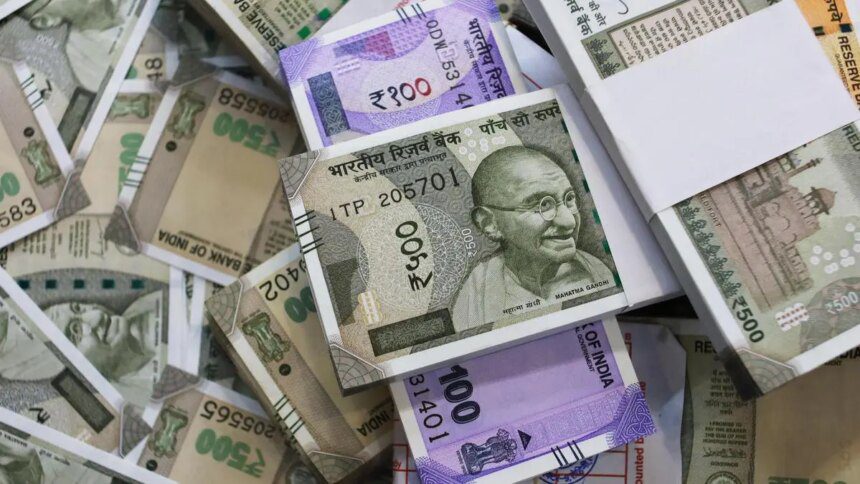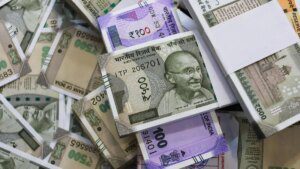Intraday, the Rupee saw a huge 107 paise movement, with the high/low being 88.60/ 89.67
The Indian currency (INR) was weighed down by worsening trade deficit, lack of visibility on progress in talks on US’ steep import tariffs on Indian goods, aggressive short-covering getting triggered after INR breached the 88.80 level, and the Dollar gaining strength on expectations the US Fed may not cut interest rate at its December meeting.
The Indian currency closed at a record low of 89.49 per US Dollar (USD), down 79 paise, over the previous close of 88.70.
Intraday, the Rupee saw a huge 107 paise movement, with the high/low being 88.60/ 89.67.
India’s trade deficit (imports are more than exports) widened to $41.68 billion in October from $32.15 billion in September. This is exerting pressure on the Rupee.
Dipti Chitale, CEO, Mecklai Financial Services, said: “The rupee hit a new all-time low today, with the decline coming in an exceptionally sharp move less than an hour before the interbank close.
“This fall coincidently aligns with comments made yesterday by RBI Governor Sanjay Malhotra, who indicated that there is no specific target level for the currency and that the recent depreciation is largely a function of dollar demand and broader geopolitical tensions.”
She observed that the Rupee’s slide could be attributed to multiple factors — including the absence of RBI intervention after the withdrawal of its sell USD support, stop-loss triggers around the 88.90–89.00 levels, and uncertainty surrounding the India–US trade negotiations with possible further delays.
Abhishek Goenka, Founder, IFA Global, noted that the 88.80 per USD level had become a line in the sand and most market participants would have had that as a stop loss in mind.
“While the breakout is being attributed to lack of developments on the trade deal front or an Indian firm being on the list of sanctioned firms for buying Iranian crude, the real reason seems to be more technical in nature.
Rate cut
“Expectations of a rate cut by the Fed in December have got trimmed due to lack of availability of data on account of disruptions due to US government shutdown. Most Fed members who have spoken lately have been hawkish. The Dollar has strengthened overall as a result. This might have resulted in the RBI giving up it’s defence of 88.80 mark,” he said.
Goenka underscored that the RBI has already expended considerable reserves defending the 88.80 level.
“It’s short position in forwards including NDF (non-deliverable forward) is likely over $70 billion. RBI would have wanted to keep some ammunition dry to intervene at higher levels rather than go all in at 88.80,” he said.
Going forward, Goenka expects the Rupee to settle in a new 88.80-90.00 range, with its movement likely to be deliberate in a gradual, staircase like manner.
Anindya Banerjee, Head of Research – Currency, Commodity and Interest Rate Derivatives, Kotak Securities, observed that the USD/INR pair broke decisively above 89, a level many importers and dealers believed the RBI would defend.
“Once this perception failed, aggressive short-covering kicked in across onshore and offshore markets, triggering stops and amplifying the upside move,” he said.
In the near term, Banerjee expects a combination of risk-off flows, a firmer US Dollar Index, and trade-deal uncertainty to keep the bias upward, with the pair potentially testing the 90 mark. For now, traders are watching a broad spot range of 88.70–90.30.
Published on November 21, 2025










